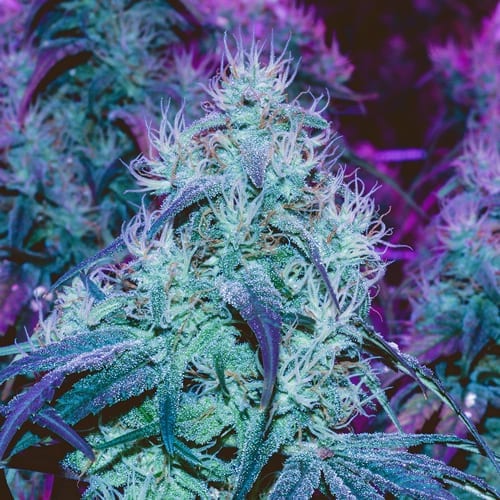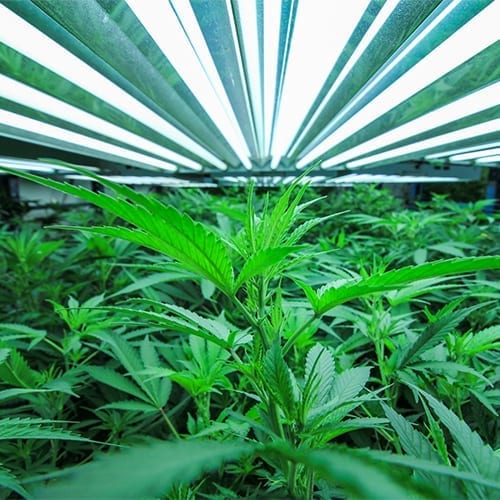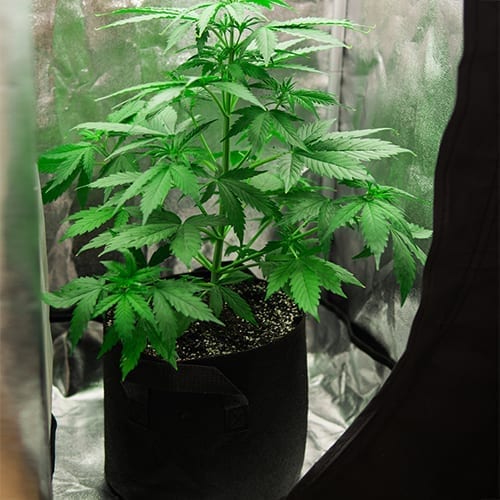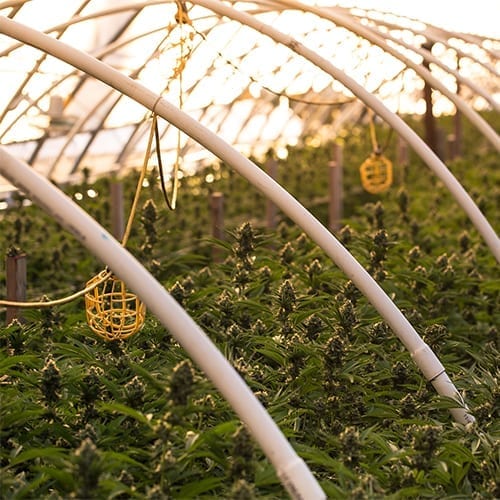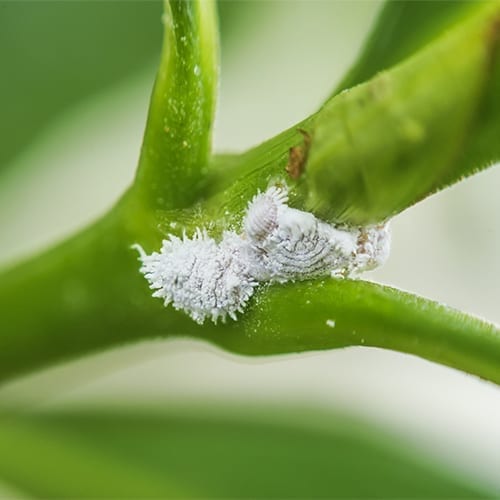
Mealybugs can represent a serious pest for marijuana plants. While they rarely attack indoor plants, they are normally found in outdoor crops.
Biology of mealybugs
Mealybugs are insects characterized by having a carpace of different colors and consistencies, depending on the species. This carapace acts as protective shield against other insects and also against insecticide treatments.
They feed by piercing the plant tissues and sucking sap from leaves, stems and fruits. They excrete part of this sap as sugary honeydew, which can lead to the growth of a fungus called sooty mold.–
They can breed one or more generations during the year, depending on the species and the climate of the area. They leave the egg as larvae, then they transform into an adult mealybug which lays new eggs that will generate more larvae again. This process (generation) can be performed 1, 2, 3… times a year.
Let’s see now how to identify these insects and how to treat an infestation before it compromises the growth of the plants.
How to detect a mealybug infestation on cannabis plants
In the first phase of the infection, it is an easy to eradicate marijuana pest, but the situation can become much more complicated from the second generation since the marijuana buds hide these insects, which are covered by the bud and produce a very unpleasant effect on the final product. We can detect mealybugs in several ways:
- Identifying the insect, which is usually found attached to the stem. Still, in subsequent generations we can find them also attached to the leaves
- Spotting bright and sticky stains on the leaves due to the sugary honeydew (be cautious because aphids and whiteflies also produce these stains)
- Observing the growth of sooty mold (as before, this fungus can also grow on the honeydew excreted by aphids and whiteflies)
Damages caused by mealybugs
- Direct damages caused by absorbing the sap of the plant, which will gradually lose vegetative vigour
- Indirect damages produced by the sooty mold fungus, which settles on the molasses excreted by the mealybugs. This also debilitates the plant condition, since the leaves of the plants become black (covered by the fungus) and therefore they can’t perform the photosynthesis process correctly
How to manage an infestation of mealybugs
These are some of the steps that we should follow to efficiently manage a pest of mealybugs:
- Remove the most affected parts of the plant
- Prepare a mixture of water and alcohol at 50% and remove the mealybugs manually with a cotton cloth soaked in this solution
- Use some organic insecticide like neem oil extract (Ain THC) or natural pyrethrins
We can also use biological control. Both Cryptolaemus montrouzieri and Leptomastix dactylopii are some of the most efficient predators to combat mealybugs.
Source: www.alchimiaweb.com


